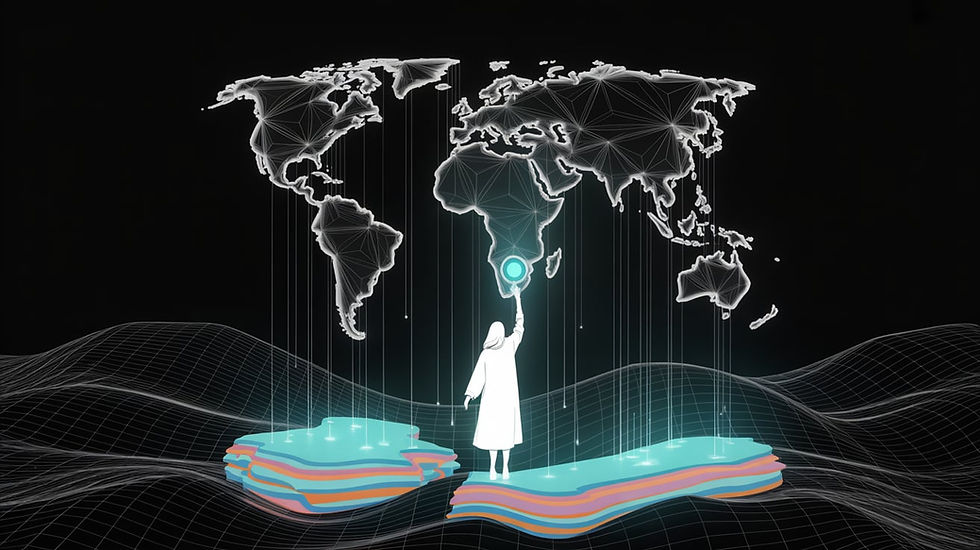Another Crazy Day in AI: NVIDIA's Physical Reality Research
- Wowza Team

- Aug 12
- 4 min read

Hello, AI Enthusiasts.
Already knee-deep in headlines today?
NVIDIA’s latest research in Physical AI is blurring the line between simulation and reality—creating robot training grounds so convincing, you’d need a microscope to spot the difference. This is two decades of AI and graphics mastery, finally colliding.
Meanwhile, OpenAI’s o3 stayed undefeated, beating Grok 4 in the AI chess finals...
Microsoft has also started embedding GPT-5 across its suite, adding deeper reasoning and longer context.
Here's another crazy day in AI:
Building realistic worlds for Physical AI
Grok falls to OpenAI in AI chess tournament
Microsoft integrates GPT-5 into products for all users
Some AI tools to try out
TODAY'S FEATURED ITEM: NVIDIA's Robot Training Revolution

Image Credit: Wowza (created with Ideogram)
How close are we to creating virtual worlds that teach robots to think and move like us?
NVIDIA's research team has been quietly working on something that could fundamentally change how we approach robotics and autonomous systems. Their latest work in Physical AI explores the intersection of computer graphics, simulation, and machine learning to create training environments for robots that are virtually indistinguishable from reality. Published by Isha Salian on NVIDIA's blog on August 11, 2025, this research represents nearly two decades of accumulated expertise in both artificial intelligence and graphics rendering coming together to solve real-world problems.
What's happening in the lab
Virtual Practice Grounds: Robots can now train in digital environments that replicate real-world physics with remarkable accuracy, allowing them to learn complex tasks through repeated practice without the risk of damaging expensive equipment or harming people
Simple World Building: Regular cameras and smartphones can capture scenes that get converted into detailed 3D training spaces, making sophisticated robot training possible for researchers without access to specialized imaging equipment
Structurally Sound Simulations: The team fixed a persistent problem where computer-generated objects looked realistic but behaved unpredictably when robots tried to interact with them, ensuring that virtual training actually prepares machines for real materials and surfaces
Athletic Robot Skills: Researchers can now create training data for complex movements like parkour stunts, potentially giving robots access to agile capabilities that would be impractical to teach through traditional methods
User-Friendly Design Tools: Simple text commands can add realistic wear patterns, surface textures, and material properties to virtual objects, making it easier for non-experts to create believable training scenarios
Better Image Processing: Improved techniques for turning regular photographs into detailed 3D spaces result in training environments that more closely match the complexity robots will face in actual deployment
The value of this work lies in the level of realism and accuracy these virtual worlds can achieve. In robotics and autonomous systems, training environments that mirror real-world complexity are essential. A robot learning to pick fruit, assemble delicate electronics, or navigate unpredictable terrain needs a safe and controlled space to develop these skills before being deployed. NVIDIA’s focus on combining rendering accuracy, physics-based simulation, and AI reasoning is aimed at making this virtual training as transferable to reality as possible.
Simulation is not a substitute for real-world testing, but it can greatly accelerate the path from concept to deployment. It allows engineers to model rare or dangerous scenarios without the risks involved in physical trials, helping uncover potential failures earlier and refining solutions in a cost-effective way. Whether for autonomous driving, industrial automation, or disaster-response robotics, the ability to replicate environments with high fidelity opens opportunities to explore situations that might otherwise be inaccessible.
Looking beyond robotics, these advancements have implications for industries ranging from manufacturing to healthcare to entertainment. Any field where systems need to operate in complex, dynamic environments could benefit from this approach to training and simulation. While the technology is still evolving, the research being presented offers a glimpse into a future where machines learn in spaces that are both convincingly real and entirely virtual — a step toward narrowing the gap between human adaptability and machine capability.
Read the full article here.
OTHER INTERESTING AI HIGHLIGHTS:
Grok Falls to OpenAI in AI Chess Tournament
/Liv McMahon, (Technology Reporter), on BBC News
OpenAI’s o3 model triumphed over Elon Musk’s Grok 4 in the final match of an AI chess tournament, remaining undefeated throughout the competition. Unlike traditional chess programs, the event featured general-purpose AI models from major developers like OpenAI, xAI, Google, and Anthropic. Grok entered the finals as a strong favorite but made repeated mistakes, allowing o3 to secure decisive wins. The three-day contest on Google’s Kaggle platform highlights how chess continues to be a benchmark for testing AI reasoning and strategy.
Read more here.
Microsoft Integrates GPT-5 Into Products for All Users
/Elliott Smith, (Author), on Microsoft News – Source
Microsoft has begun integrating OpenAI’s GPT-5 into its full suite of products, from Microsoft 365 Copilot to GitHub Copilot and Azure AI Foundry. The upgrade brings advanced reasoning, longer-context conversations, and enhanced coding capabilities to both enterprise and consumer users. Developers can now access GPT-5 for building agents, solving complex tasks, and streamlining workflows, while everyday users benefit from smarter, faster AI assistance. Microsoft says GPT-5 also passed rigorous safety testing by its AI Red Team, showing one of the strongest safety profiles yet for an OpenAI model.
Read more here.
SOME AI TOOLS TO TRY OUT:
That’s a wrap on today’s Almost Daily craziness.
Catch us almost every day—almost! 😉
EXCITING NEWS:
The Another Crazy Day in AI newsletter is on LinkedIn!!!

Leveraging AI for Enhanced Content: As part of our commitment to exploring new technologies, we used AI to help curate and refine our newsletters. This enriches our content and keeps us at the forefront of digital innovation, ensuring you stay informed with the latest trends and developments.





Comments